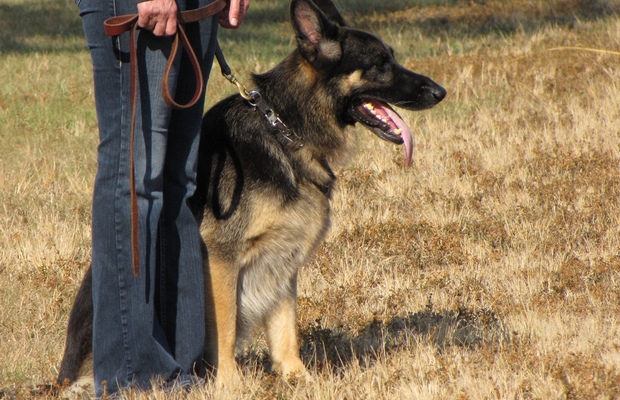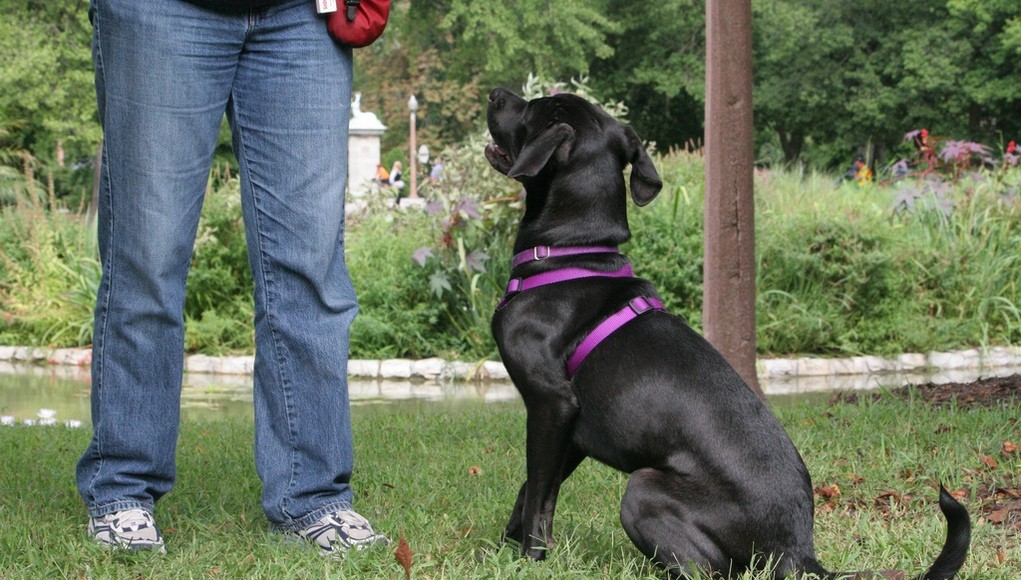When starting a new dog training business, it is important not to overlook the practical aspects involved. It takes more than just knowledge of clicker training and love of dogs. Being a certified dog trainer is one thing, but being a dog training business owner is a whole different ball game. Before you take any action, you need to know how to write a dog training business plan, which is going to serve as a foundation for your entrepreneurial venture.
Creating a dog training business plan is about much more than simply providing figures for investors or the bank. Developing a business plan will have you walk through everything you'll need to start your dog training place, help you figure out the potential for your business in the area you are in, and ultimately give you a plan to follow to ensure your business is a success.
Similarly, if you're not starting your business alone, having a solid dog training business plan will guarantee that you and your partner, or partners, are all on the same page. And, of course, a strong business plan will help you raise the money you need to get your business started. In fact, according to Inc., a study done in October of 2007 by Babson College found that…
“…start-ups with a business plan raised over twice as much capital as those that did not have one in the first 12 months.”
If you're not sure whether or not you're really interested in starting a dog training business, or you feel like you require more information, check out my last week's column on How to Start a Dog Training Business for information on what you'll need to do to ensure your business is successful. You'll learn what kind of space you'll need, how to find out about your competition, and what other paperwork will be necessary to get together aside from a dog training business plan.
How to Write a Dog Training Business Plan: Breakdown of the Plan
Executive Summary

The most important section of a business plan is the Executive Summary, as this is the first thing an investor sees. What do you want, what has prepared you for this, and what do you need? This vision is the basis of your business plan. Your vision may change as you move forward, but these goals will help you get started.
The executive summary will include
- Mission Statement: Explain what your business is all about BRIEFLY. This section should be only a couple of sentences, no more than one paragraph, long.
- Business concept: Describe your business and the market it will serve. You should point out exactly what services you will offer, who your market is, and why your business will have a competitive edge over other dog training businesses in the area.
- Financial features: Here is where you will highlight the important financial points of the business which will include sales (if you're going to carry any dog products, training products, grooming products, etc.), profits, cash flow and the return on the investment.
- Financial requirements: Clearly state the capital that you will need to start the business and to expand, if you choose to in the future. You should detail how the capital will be used. If you're receiving a loan based on security instead of equity, you should specify the source of collateral here.
- Future Plans: Where would you like to take your business in the future? Do you want to expand? Would you like to franchise your business? Do you think you would be interested in turning it into a chain?
The executive summary should highlight the strengths of your overall plan, and although it's the first thing to be seen, it should be the last section you write. It will be much easier to write this part of the business plan once you've done all your research and figured out all the other pieces of the puzzle.
Tip: Make it easy for the reader to realize your needs and capabilities quickly. Don't waste words. Make this section as clear and concise as possible. You will go into detail in other sections of your business plan.
Company Overview
The company overview is basically the mission statement for your dog training venture. Try to make this section brief and to the point. It should be the shortest section of your dog training business plan, but it is also one of the most important. This is your opportunity to introduce yourself and your business to others, and you want to be sure to put your best foot forward.
RELATED: 10 Best Dog Products for Solving Behavior Problems

Imagine that the people reading your business plan have no idea who you are or what a dog training business is. What do they need to remember about you and your particular dog training business?
You should also include details about the management team (if there are more people than just you), the legal structure and ownership details of the company, as well as the location and a short description of the facility you've chosen.
Competition Analysis
It's absolutely vital to research and find out all you can about your competition. This can be the trickiest part of writing your dog training business plan. You definitely need to do your research for this section to make it as thorough as possible.
The easiest part is figuring out who your competitors are. Chances are you're going to be running a local dog training business, and finding out who your competition is could be as simple as driving around town, opening a phone book, or doing a quick internet search.
Depending on your location you may also have non-local competitors. Think about how far customers would be willing to travel to reach your business. Are there other competitors in surrounding cities or towns?
When you discover who your competition is, you need to perform a competitive analysis. To do that you will need to know:
- What markets your competitors serve?
- What benefits they offer?
- What brings customers into their business?
- How does the competition stand out?
- As much as you can possibly find out about their services, prices, marketing, and promotional services
You can gather this information from the internet or by calling these businesses on the phone and asking questions. You can also stop into the establishment and ask questions, chat with other customers, and see what goes on in the training facility first-hand.

Financial Analysis
The next step in writing a dog training business plan is completing your financial analysis. It is really just an informed guess of what your future looks like financially. In other words, it is a projection of your future spending and earnings. Of course there is no way of knowing what the actual results will be, and in reality what you project may not be what you make.
RELATED: 9 Best Dog Tech Devices Pet Owners Love
It is wise to overstate your capital since entrepreneurs have a natural tendency to forecast a faster revenue growth than what is realistic. You shouldn't fuss over minute details and exact figures. It's more or less a large picture of the financial projections that you are expecting for the future of your dog training business.
Your financial statement should include four separate statements:
- Balance Sheet: This should include your assumed and anticipated business financials, including assets, liabilities and equity.
- Cash-Flow Statement: This is an overview of the cash you anticipate will be coming into your business based on income you forecast minus the anticipated cash expenses of running the business.
- Profit and Loss Statement: Your income statement usually encompasses a quarter or an entire year. It subtracts the costs of the business from the earnings over the specific period of time.
- Break Even Statement: This shows when the cost of operating the business will be fully covered by the businesses income.
Even though this will be one of the most challenging pieces of your business plan, it will also likely be what makes or breaks your investors decision to support you.
Tip: You may want to enlist the help of a financial professional for this section.
Marketing Plan
When starting a new business, you need to come up with a marketing strategy. Identify your customer demographic and think about the things that would draw them in to a dog training business. Try to come up with a unique quality that sets your business apart from other similar places.

You will need to create a unique image for your business cards, brochures, postcards, and website. If you have enough in your start-up fund, you may want to hire an expert for these tasks.
It is helpful to have a brochure or flyer that describes your services and costs, and answers other questions that new customers may have. All your brochures and flyers should include your name, logo, phone number, and website address.
RELATED: 10 Useful German Shepherd Training Tips
Depending on your budget there are many different ways to market your business, and you have to plan your marketing strategy with that in mind. Television commercials and radio ads are a great way to promote your business, but they are also very costly. Cheaper options like handing out flyers, passing out business cards at local pet stores, and even hosting an open house at your facility may be more feasible options.
Having a website for your business is essential in this age of technology. Your site can:
- Keep track of pertinent data
- Provide information about your services
- Allow clients to sign up for newsletters
- Provide useful tips for the dog owners
- Give class descriptions, times, and locations
- Provide an easy way for clients to sign up for classes
Operations Plan
Your operations plan will explain the day to day operations of running your business, and it is a very important part of your dog training business plan. You will want to include the following in your business operations plan:
- Suppliers: Who will be providing you with all the training supplies that you will need for the dogs?
- Facilities: Where will you be training dogs? In a facility, your house, or the client's home?
- Personnel: How many staff will you require for your daily operations? What will their duties look like?
- Equipment: What tools and technology do you require to be up and running?
- Customer support: How will you handle customer complaints, refunds, and other requests that will be part of your daily business?
Client Relations
When dealing with clients, professionalism is of the utmost importance. Following up with customers, doing what you say you will, and making sure to return phone calls and emails in a timely fashion are the key to earning a good reputation and lots of recommendations.

You should take this opportunity to think about how you would want to be treated if you were a customer at a dog training facility. And remember, your customers aren't just the pet owners that you're working for. You need to take into account how you will handle the animals as well.
With the internet and social media being as popular as they are, you should also consider adding these forms of communication into your customer relations policy. Are you willing to communicate with customers through social media? What about email or through your website?
Legalities
You’ll face a myriad of practical and legal decisions as a new business owner, and they will differ depending on the state and city that you live in. It can also be difficult to stay up to date because there are always new rules and regulations coming down the pike.
Some of the legal issues you will want to address in your business plan include:
- Will you need a business license?
- Do you plan on incorporating, having a partner, or is this a sole-proprietorship?
- A sales tax account?
- Will you offer only dog training or will you be carrying products as well?
- Should you buy insurance?
- Should you have liability waivers for clients to sign?
- Will you make your clients sign a contract?
Dog training can become a serious business venture with a thriving income, but in order to join the ranks of other self-employed dog trainers, you need to do your homework. Talk to other small business owners or better yet, those in the pet industry, to see what works and what doesn't. Read everything you can about dog training and focus on achieving a happy medium between your vision and what to expect realistically.













